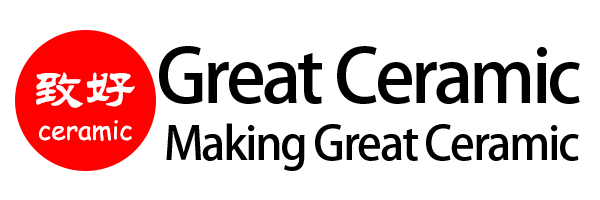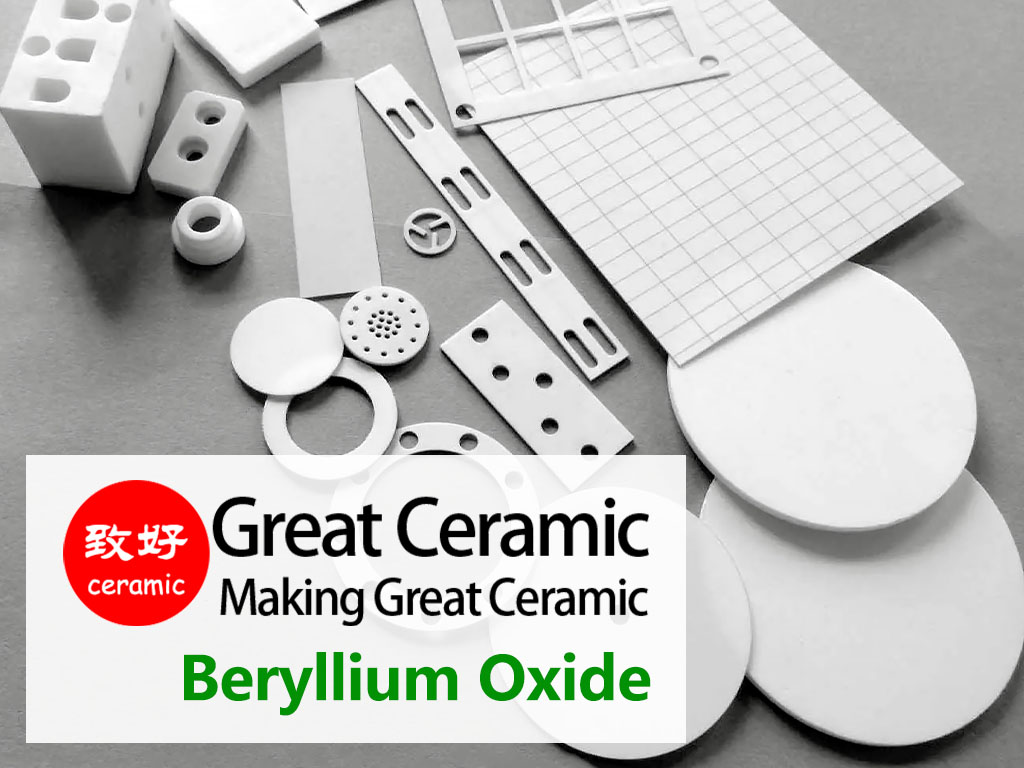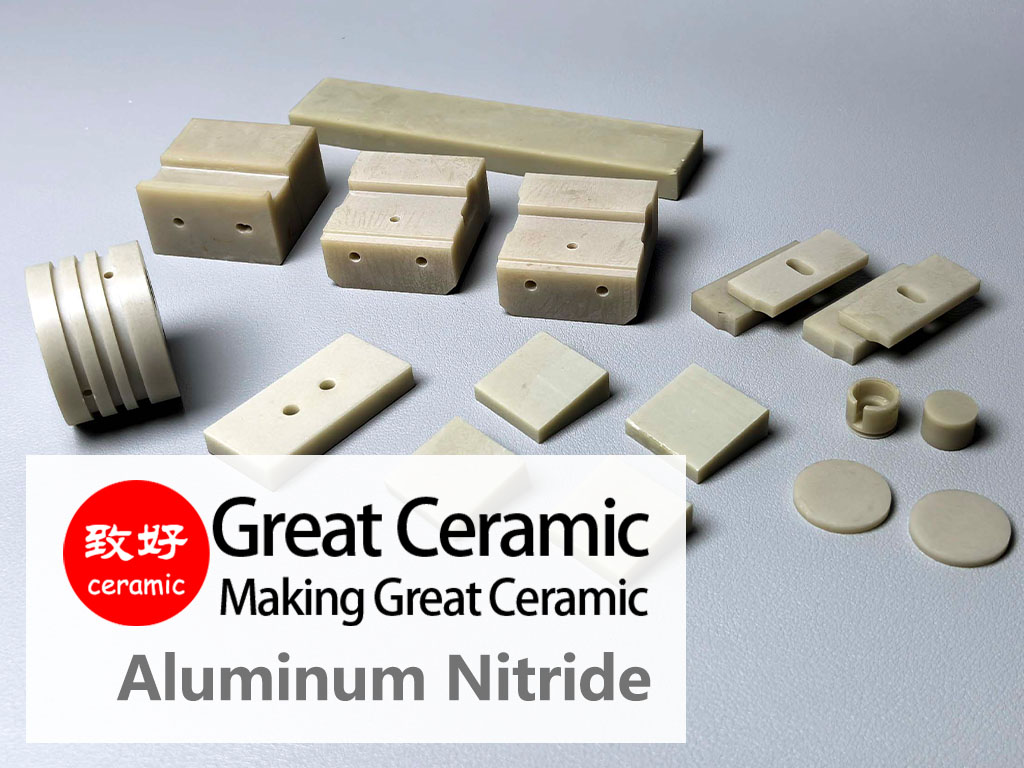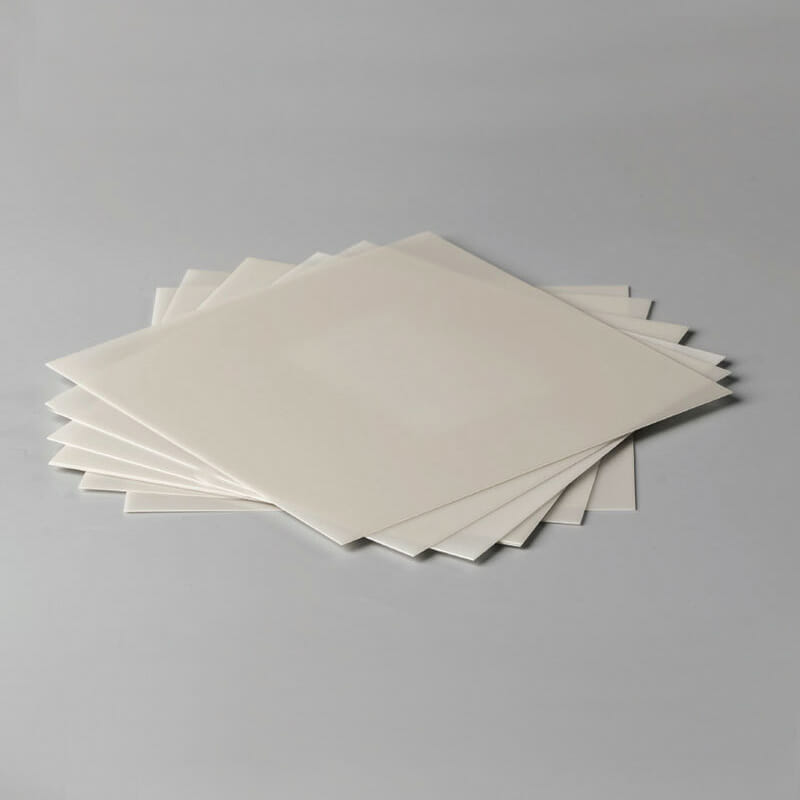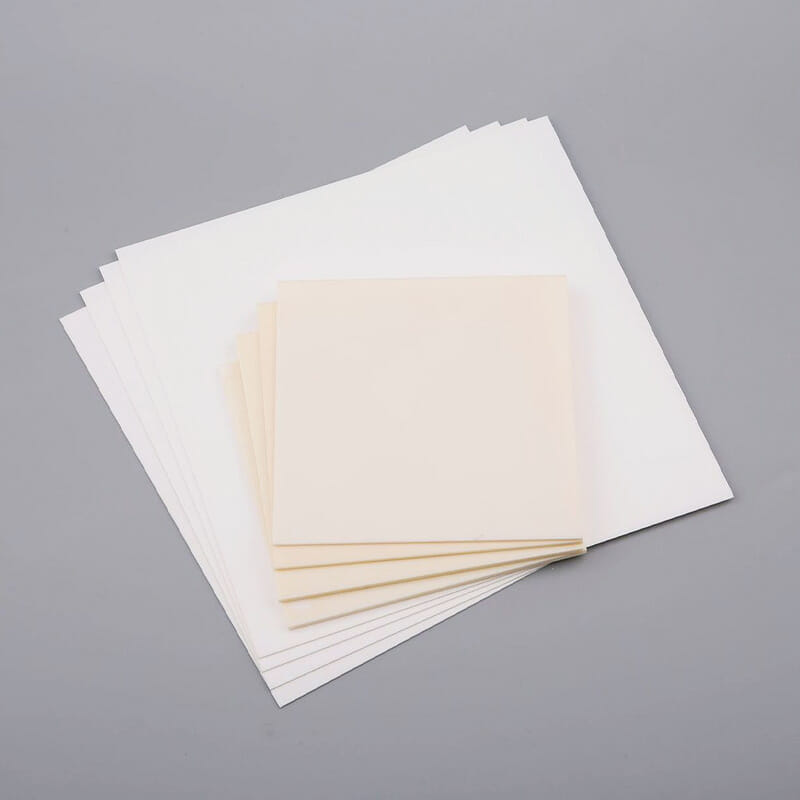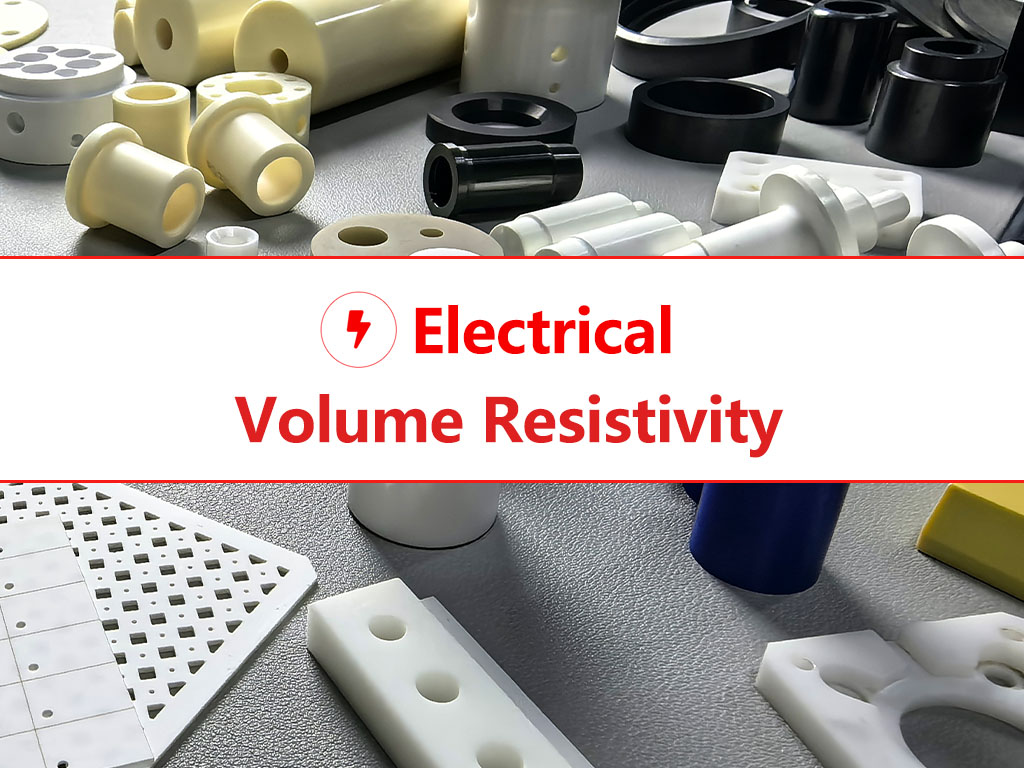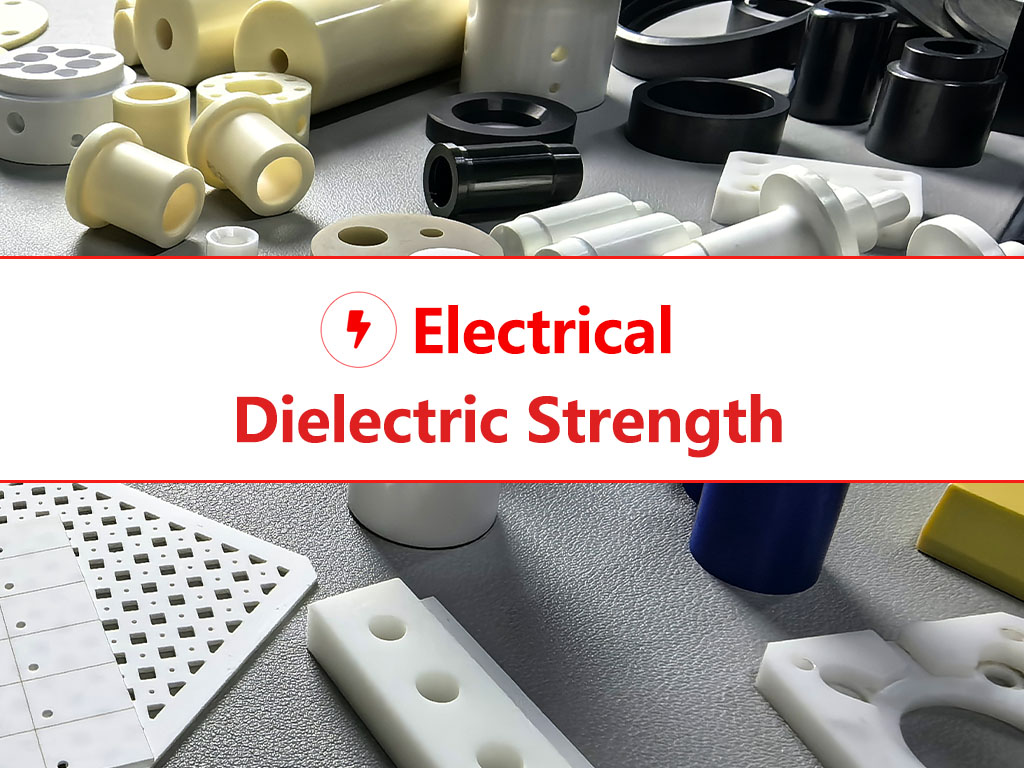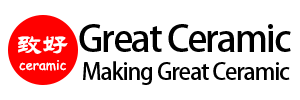첨단 세라믹의 유전 상수
그리고 유전 상수로도 알려진 상대 유전율(εr)는 재료가 전기장에서 전기 에너지를 얼마나 잘 저장할 수 있는지를 나타내는 척도입니다. 이는 진공의 유전율(ε₀)에 대한 재료의 유전율의 비율을 나타냅니다. 유전율이 높을수록 전하를 저장하는 용량이 커지며, 이는 커패시터, 절연체 및 고주파 전자 부품에 매우 중요합니다.
고급 세라믹 소재는 다양한 유전체 특성으로 인해 고주파, 고출력, 마이크로파, 레이더 및 패키징 분야에서 널리 사용됩니다. 선택 시 기업은 작동 주파수, 열 관리, 기계적 구조 및 치수 정확도와 같은 종합적인 요소를 바탕으로 최적의 소재 조합을 평가해야 합니다.
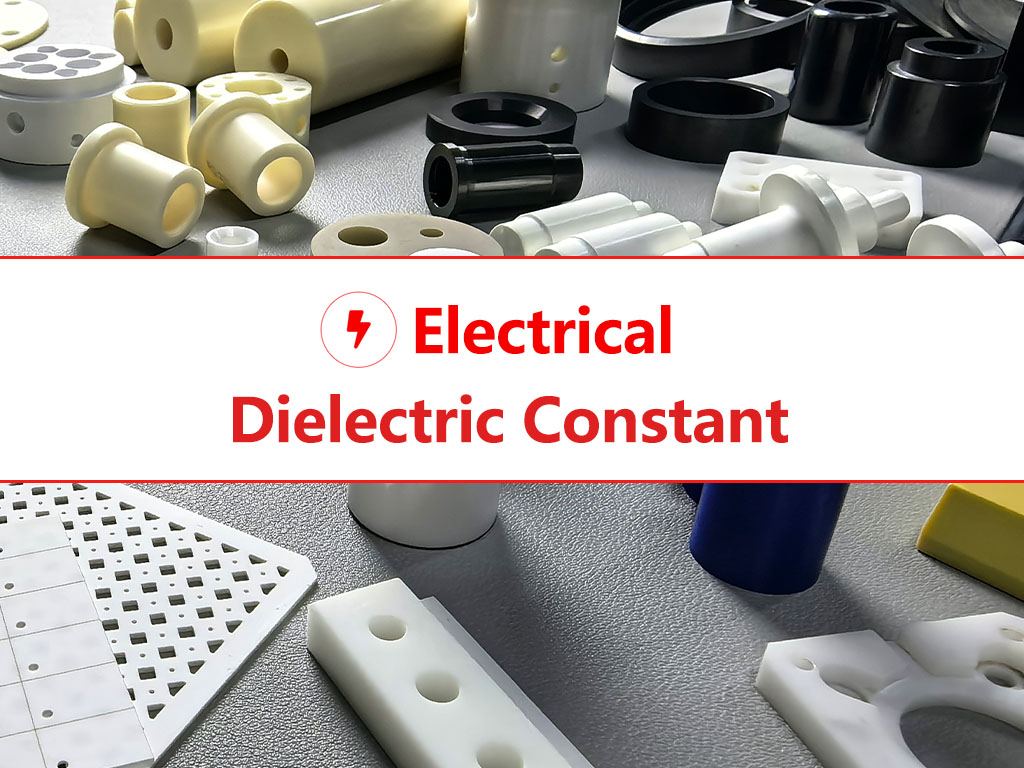
세라믹에서 유전 상수의 중요성
세라믹 소재는 전자 제품 및 전기 절연에 널리 사용됩니다:
유전 상수는 다음에서 중추적인 역할을 합니다. RF 부품, 기판, 커패시터, 안테나및 반도체 패키징. 적절한 유전율을 가진 올바른 세라믹 소재를 선택하면 특히 고주파 및 고온 환경에서 최적의 성능을 보장할 수 있습니다.
세라믹의 유전 상수에 영향을 미치는 요인
유전체 손실 및 주파수 안정성
εr은 충전 저장 능력을 결정합니다, 유전체 손실(탄 δ) 는 에너지 방출을 측정합니다. PTFE 또는 h-BN과 같은 재료는 매우 낮은 황갈색 δ를 사용하여 고주파 RF 설계에 적합합니다.
또 다른 요소는 주파수 의존성. 지르코니아 같은 일부 세라믹은 유전 상수가 높지만 GHz 범위에서 더 큰 손실과 불안정성을 보이는 반면, AlN과 Si₃N₄는 더 안정적으로 유지됩니다.
일반적인 세라믹 재료의 유전 상수
| 세라믹 소재 | 유전 상수(εr) | 특성 |
|---|---|---|
| 알루미나(Al₂O₃) | 9-10 | 낮은 손실, 안정적인 구조, 비용 효율적 |
| 지르코니아(ZrO₂) | 18-25 | 고강도, 고열 팽창 |
| ZTA20(지르코니아 강화 알루미나) | 12-15 | 강도와 유전체 특성 결합 |
| 질화규소(Si₃N₄) | 7-8 | 높은 강도, 낮은 유전 손실 |
| 질화 알루미늄(AlN) | 8.5-9 | 높은 열 전도성, 낮은 유전체 손실 |
| 실리콘 카바이드(SiC) | 9.7-10.2 | 뛰어난 고주파 안정성 |
| 베릴륨 산화물(BeO) | 6.5-7.5 | 높은 열 전도성, 낮은 εr |
| 육방정 질화 붕소(h-BN) | ~4 | 매우 낮은 εr, 뛰어난 열 안정성 |
| MGC(가공 가능한 유리 세라믹) | 5.6 | CNC 가공 가능, 마이크로파 구조에 이상적 |
*데이터는 참고용으로만 제공됩니다.
재료 선택 가이드: 유전 상수에 따른 세라믹 선택하기
| 적용 방향 | 추천 자료 | 이유 |
|---|---|---|
| 고주파/저손실 | AlN, BeO, h-BN | 낮은 εr + 낮은 손실 + 높은 열 전도성 |
| 전력 패키징/냉각 | AlN, Al₂O₃ | 적당한 εr + 뛰어난 방열성 |
| 레이더 돔/안테나 커버 | MGC, BeO | 우수한 가공성 + 낮은 εr |
| 고주파 커패시터 | ZrO₂, ZTA | 높은 εr + 우수한 기계적 강도 |
| 마이크로파 구조 | MGC | 손쉬운 가공 + 안정적인 유전체 성능 |
유전 상수: 세라믹과 기타 재료 비교
소재 선택 시 세라믹 유전율의 장점을 이해하는 데 도움이 되도록 다음 차트에서는 세라믹 소재와 일반적인 절연체 소재, 전자 산업 소재 및 폴리머 플라스틱을 비교합니다:
*데이터는 참고용으로만 제공됩니다.
